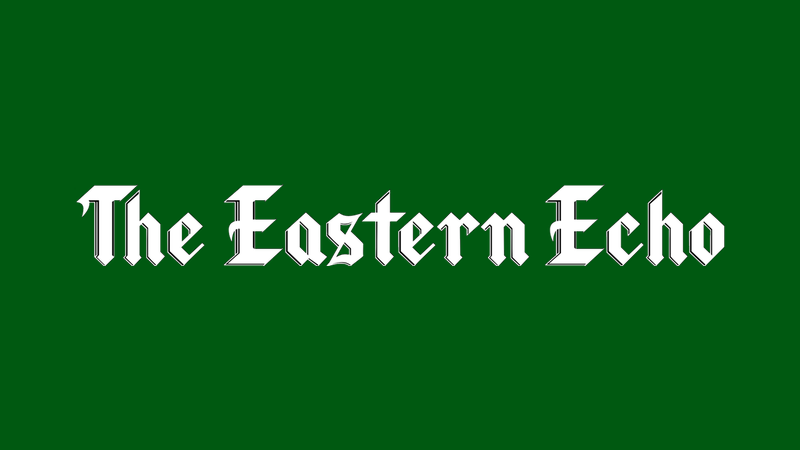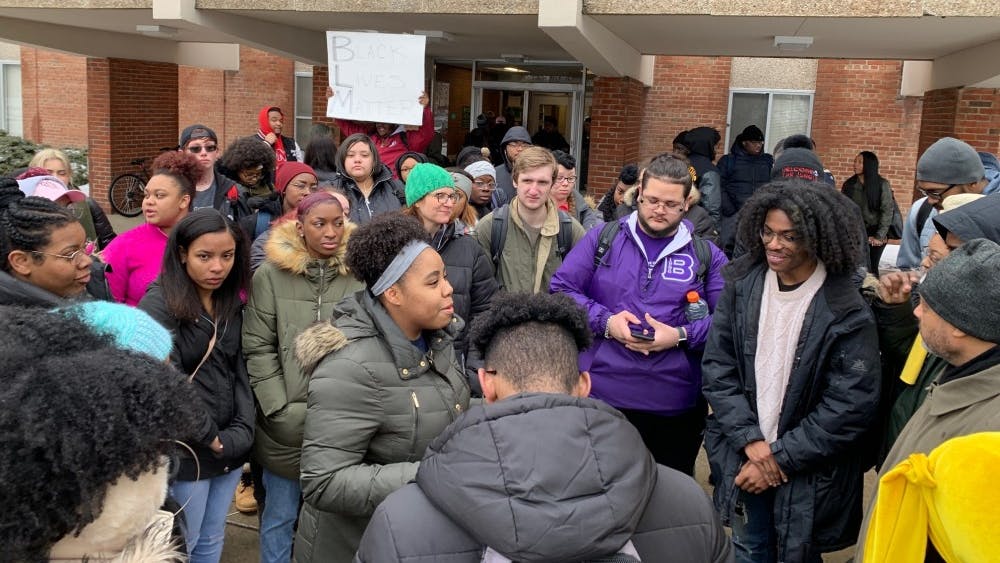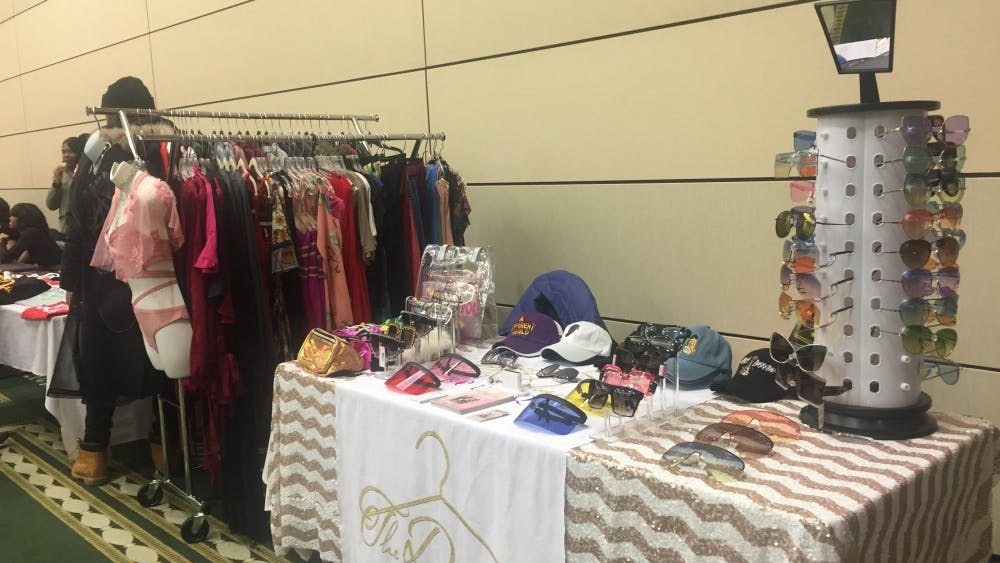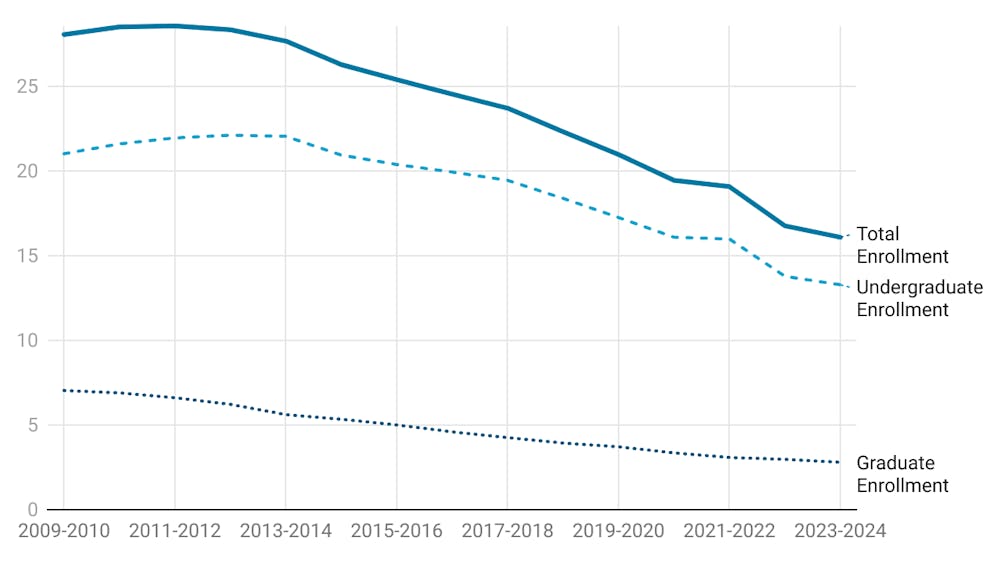Poets Kevin Killian and Wayne Koestenbaum showcased their recent visual creation of photography and painting to Eastern Michigan University students and faculty Thursday night, in the Student Center Auditorium.
The event was part two of the BathHouse Reading Series. In this series, poets discussed and showed their works “Trance,” an altered space of consciousness and “Pink,” a queer way of coding the world.
The BathHouse Reading Series was created by the Creative Writing Program at EMU. It features writers and artists performing and discussing their work. Part one took place on Wednesday where the poets read their poetry to an audience.
“It’s a very crucial part of our program,” said Professor of Creative Writing at EMU, Christine Hume. “It’s important for students to be able to interact with and see contemporary writers and ask questions with them and to engage in the form of reading and performance because how people present their work is a part of it and I think that’s the most important thing.”
Because it is interdisciplinary, the Creative Writing program was interested in the two poets not only for their achievement in writing, but also for their work in other mediums.
“They are very interdisciplinary and that is also what makes our program unique… it is introducing the very program where we ask students to draw on the different fields,” said Hume.
The event was opened up by Professor of Creative Writing at EMU, Rob Halpern, where he talked about his personal connection with the guest poets and the affect their writing has had on him when he was younger.
“They are among those writers who, without their writings, I would have been lost,” he said.
Killian, a San Francisco-based new narrative writer, playwright and photographer was the first to talk. He discussed his recent project, “Tagged,” an album of intimate photographs of nude poets, filmmakers and other artists who volunteered to have their photo taken.
There was a slideshow that displayed the photographs that focused on their genitals and/or a drawing of one by Raymond Pettibon that was to explore the models’ relationship with masculinity. Killian called it a “sex act without sex attached.”
The photographs were taken in a range of places from museums to hotels to even the models’ homes where the photographs slowly became more personal and intimate, displaying first the genitals, then the model’s names, then their jobs. The models included both identified straight and gay men.
“Once a picture is taken it’s in the past, dead and gone,” said Killian. “People would go crazy because they try to keep moments alive to make sense. The answer is to not think about it. That’s my thing with consciousness. It’s just not about them waking up, but being in a trance. The moment they are in the picture, they are in a trance. They are under my spell.”
As a new narrative writer, Killian explores sexuality and gender in his writings.
Sophomore vocal performance major, Clare Evett, and freshman history major, Natalie Osbourne both thought the performance was interesting but revealed too much of male genitals.
Koestenbaum, a New York-based poet, critic, musician and painter displayed a slideshow of oil paintings that were images taken from porn that were stenciled, traced, re-traced and pressed as what he called a “Warholian” process based on an Andy Warhol aesthetic.
The paintings displayed were not only images from porn, but of models and flowers as well. With the beginning of this painting practice, Koestenbaum said he had a “rebirth of lines.”
“I had a dream that I was holding a fountain pen and that I was writing with it, but they weren’t words [and] the lines were just continuing. I understood that this was what I would do so I went to the art supply store and bought some water colors and I began and it really took over everything,” he said.
“What I learned was that decoration could take over the body and that the pleasure of decorations was like the pleasure of writing.”
After their displays, the event concluded with a Q&A and a book signing by the artists. The Q & A included a discussion on stereotypes, genre and gender.
Osbourne said that she “got some abstract ideas from it” because she usually writes genre literature.
Halpern thought it was an exquisite performance.
“I hope it encourages others to check out the creative writing program here at EMU because it is well represented in the BathHouse,” said Halpern.
You can find the works of the two poets in the Student Center Campus Bookstore or online.










